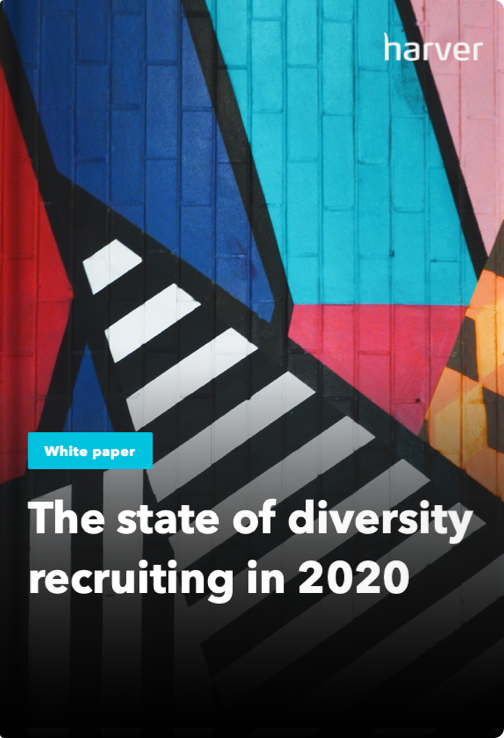Building a culture of diversity and inclusion (D&I) in the workplace is an important strategy to ensure that your organization is as conscious of diversity as possible.
However, according to findcourses.com’s 2019 L&D report, a whopping 48% of employees do not receive any form of D&I training at work. This worrying statistic may explain some difficulties faced by HR managers: over half of all HR managers struggle when recruiting top global talent to their companies.
There are multiple barriers to recruiting international talent, such as scouting diverse talent from where your organization operates, complicated visa requirements and navigating international timelines and communications. But, by implementing a culture of D&I at your organization with help of well-designed diversity training programmes, your talent acquisition team will be well-equipped to contribute to that culture in their recruitment strategy.
Practicing training professionals have identified some key strategies for D&I training that have nurtured diverse and inclusive workplace cultures, and diversified talent pipelines to ensure that a wide variety of perspectives are brought into organizations.
Find out how to bring diversity through the doors of your organization, and start the journey of addressing diversity in your organization’s recruitment strategy.
What’s in?
- Starting the change at the top
- Creating impact in talent acquisition and recruitment
- Putting inclusion into practice
- Bringing training into concrete reality
- (Re)gaining your competitive edge
Like what you see?
Don’t miss out. Subscribe to our monthly digest to get the latest TA and TM resources delivered right to your inbox.
1. Starting the change at the top
So you’re ready to address your organization’s diversity needs, but where do you start?
No matter the size of your organization, the cliché that changing workplace culture is difficult is a cliché for a reason. Employees can easily fall into the same old routines and practices, without looking up to realize that their industry and market is constantly changing right before their very eyes.
Recruiters and talent acquisition specialists are no exception to this.
When the realities of diversity are left unaddressed at your organization, the importance and value of new and diverse perspectives can be forgotten, and your business can begin to fall behind in the lightning-fast changes faced by every organization in today’s market.
Diversity training programmes offer a real solution, as they can help employees across organizational hierarchies to understand the importance of diversity and stay conscious of how diversity plays into recruitment.
But to implement a successful D&I training strategy, organizational leadership needs to be highly engaged in the process. According to the 2019 report, companies with leadership engaged in L&D were 3x more likely to report that their organization had a culture of innovation. Every organization is unique, and by promoting diversity training initiatives from the top levels of management, training strategies will be more aligned with overall organizational goals and avoid the mistake of implementing a ‘copy-and-paste’ diversity strategy that often proves to be unsuccessful.

72%
of companies offering D&I training saw an increase in profits the previous year.
Source: FindCourses.com
Strengthening your diversity training efforts benefits the bottom line.
2. Creating impact in talent acquisition and recruitment
“It is true that a single training or resource cannot solve prejudice,” says Janine le Sueur, VP of Programs for The Association of Junior Leagues International, Inc. In addressing diversity issues, she explains that “We are taking an organizational approach rather than individual learning, meaning both our resources and training are designed to help Junior League leaders take intentional, systemic action to make D&I central to all aspects of their Leagues.”
Once your leadership is involved in creating and implementing a diversity training programme, all employees going into the training will have a deeper understanding of how important diversity is to the overall goals of the organization. They will also be more motivated to put what they’ve learned into practice.
Shaping change across your organization from the top-down will help your employees internalize how diversity functions within your organization, and why it is an important tool to bring your organization into the future.
Training coming from the top to address diversity and hiring bias will teach recruiters about their own unconscious biases, improve their cultural competence and help effect change from the bottom up through recruitment.
With a change in culture, creating and introducing more inclusive recruitment strategies will become an inevitable positive shift in the right direction.

78%
of talent professionals believe that diversity is a top trend shaping the future of recruiting and hiring.
Source: Linkedin
65% of large companies already have an official program in place to recruit a diverse and inclusive workforce. But, for example, 71% of female Millennials don’t feel that opportunities are really equal for all despite organizations talking about diversity. That suggests that there is still a long way to go in ensuring truly inclusive recruitment practices and workplace culture.
The state of diversity recruiting in 2020
3. Putting inclusion into practice
At BCG Digital Ventures, they took a more radical approach to shifting their workplace culture to be more inclusive, and the results paid off.
Max Avruch, learning and organizational development specialist at BCG DV explains that “It’s the notion of really trying to include everyone and not feeling like there’s the segregation that can easily happen in a work-type community.” All senior leadership at BCG DV receive unconscious bias training, but the company recognizes that training sessions are only one part of the puzzle.
Formal D&I training sessions do have value, but the diversity training programmes need to go further in order to have a real impact on workplace culture. Other inclusion initiatives like lunch-time learning, mentoring or employee resource groups bring colleagues with shared identities (and allies!) together to discuss issues that come up for them at work, and in life in general.

High-performing companies spend
3-4x
as much on learning and leadership as their peers.
Source: Josh Bersin
If you want your organization to outperform your peers, you also have to be willing to invest into training, learning and development of your employees. In return, you will be able to innovate, provide better customer service and retain employees longer.
4. Bringing training into concrete reality
In celebration of LGBTQ+ Pride Month, BCG DV took the extra step of posting Kinsey scales in all their company washroom stalls and invited employees to anonymously post their own position on the scale. “It was a way for us to show diversity on our walls and to show people there is a spectrum around orientation.” Small steps like this can shift culture to make employees aware of the existing diversity at their organization in an anonymous and safe way.
Avruch explains that “So many companies hold off on [D&I training] until they get bigger… But by then, the culture already starts forming. Learning and development drive culture, and it needs to be built into all levels of an organization.” However, this is not yet a reality for many organizations. For example, only 30% of employers across all sectors say that their recruitment and diversity strategies are completely aligned.
By making diversity training programmes and initiatives an organizational endeavor, talent managers and talent acquisition specialists have the chance to have a direct impact in actualizing what they learn in training. This enables them to better engage with a diverse talent pipeline and contribute to making your organization more diverse and inclusive overall.

Employees in organizations committed to and supportive of diversity where they feel included report
42%
uplift in team collaboration.
Source: Deloitte
Inclusive and supportive organizational culture also increases the teams’ ability to respond to customer needs. While diversity training programmes are important to educate employees, inclusion has to be entwined in the company DNA for the organization to thrive.
5. (Re)gaining your competitive edge
In a survey of 10,000 Millennials, a whopping 80% reported that a diverse workplace was an important factor when deciding if they’re going to work for a company.
Increasing diversity in your workplace can also improve:
- Productivity
- Innovation
- Leadership inclusivity
- Customer service.
Creating a diverse workplace culture is not only the right thing to do, it’s a proven strategy to increase business success. Companies in the top quartiles for gender and ethnic diversity outperform their competitors by 15% and 35% respectively.
At Ernst and Young (EY), they’ve seen the success of increasing diversity in real time with more innovative and high-quality content and outputs. Given that EY operates in more than 150 countries, Martin Hayter, Global Assurance Learning Leader for EY explains that his “team has a global flavor to it…and we know that the content we develop is going to be applicable to different cultures, and to both emerging and mature markets.”

Inclusive companies are
1.7x
more likely to be innovation leaders in their market.
Source: Josh Bersin
Members of inclusive teams feel that they can express their opinions and ideas. Collaboration within the teams is improved, leading to a performance boost.
The takeaway
Increasing diversity in any organization is a simple reality of the contemporary workforce. Generation Z, the most diverse generation in American history, are currently starting their careers, while Millennials will make up 75% of the workforce by 2025. Looking at your current training and recruitment strategy, does your organization facilitate this diverse workforce as it should?
Creating a workplace culture that nurtures diversity and inclusion through diversity training programmes is a direct way to increase diverse recruitment, and keep your talent acquisition team aware of how unconscious bias affects hiring practices.
Engaging leadership in diversity training and initiatives to impact recruiters, putting radical inclusion into practice and taking the extra step outside of one-off training sessions are all strategies to increase and maximize the diversity potential of your workplace culture and current recruitment strategy. With an established workplace culture focused on D&I, and a talent-acquisition team well-trained in diversity and inclusion, the journey to a more diverse workplace and culture will unfold with ease.
Get on the road to a more diverse work environment and culture today!
| About the Author: Max Maccarone is a content editor for the higher education portal educations.com and professional development search engine findcourses.com. Originally from Canada, Max relocated to Stockholm after graduating from York University in Toronto. An avid traveler, Max is dedicated to creating diverse and engaging learning and development content for a wide range of publications. |


